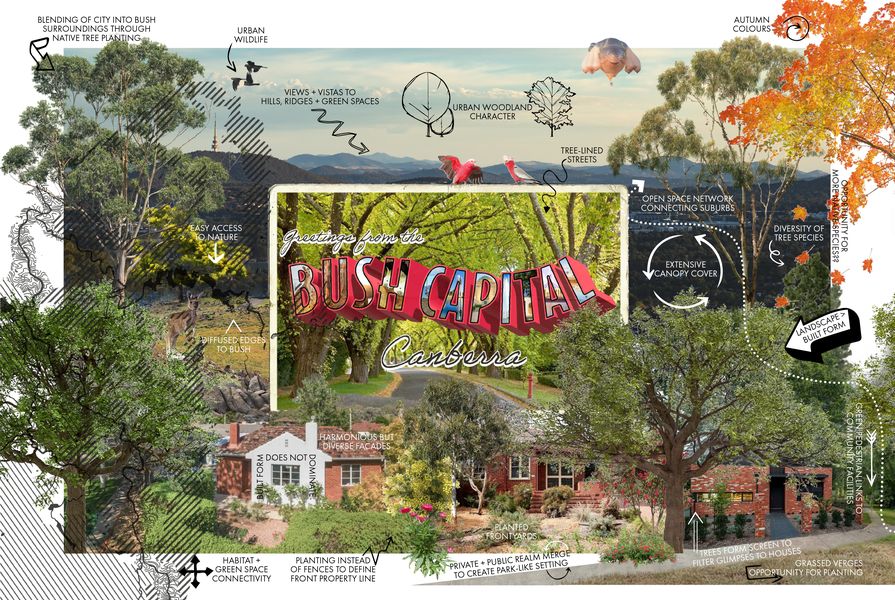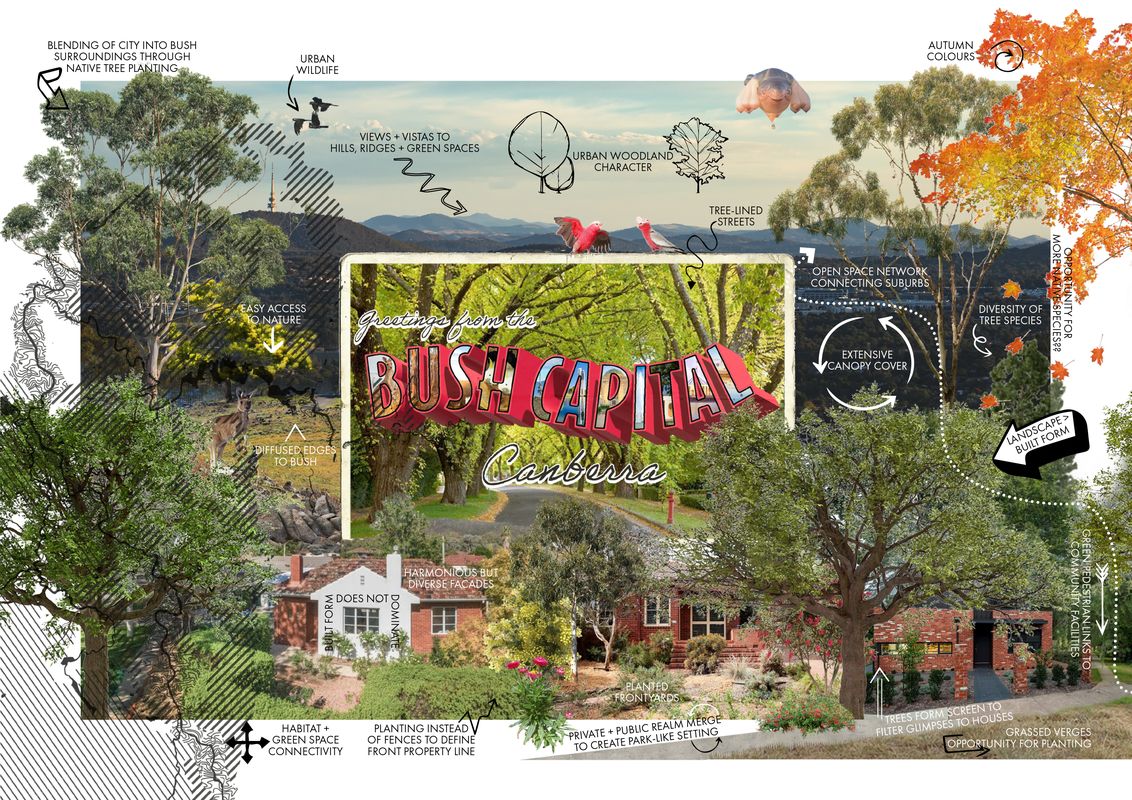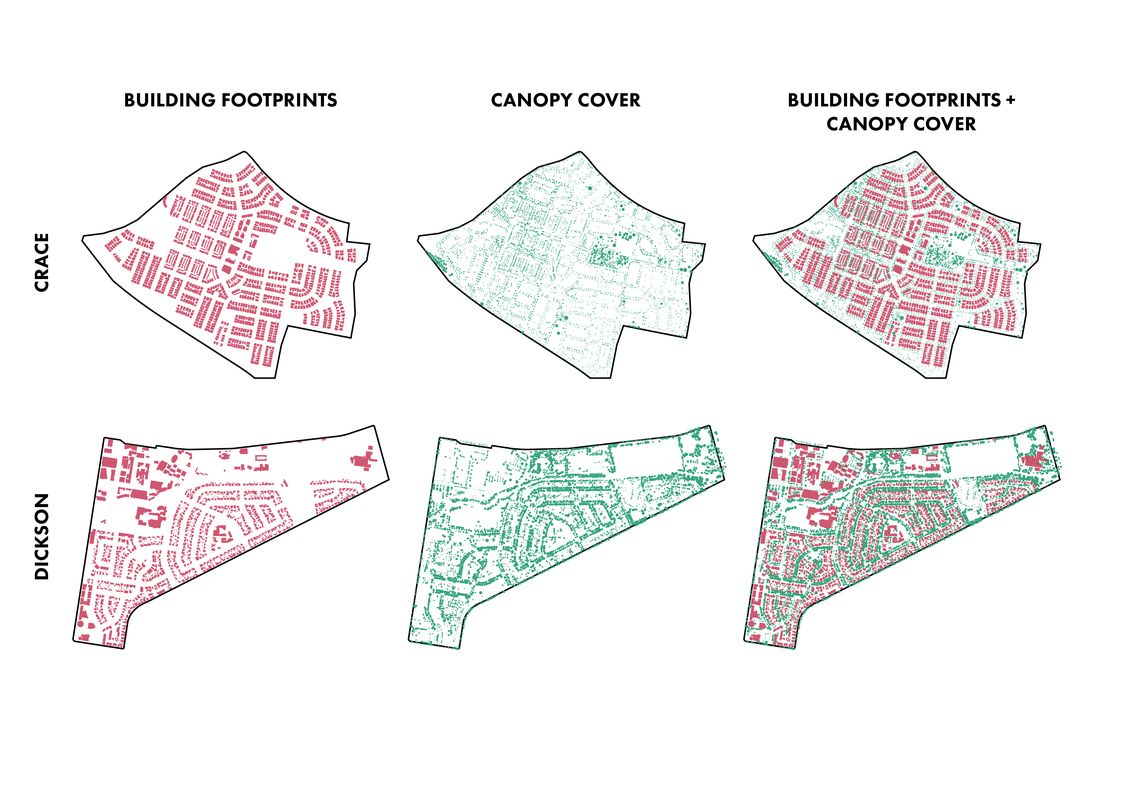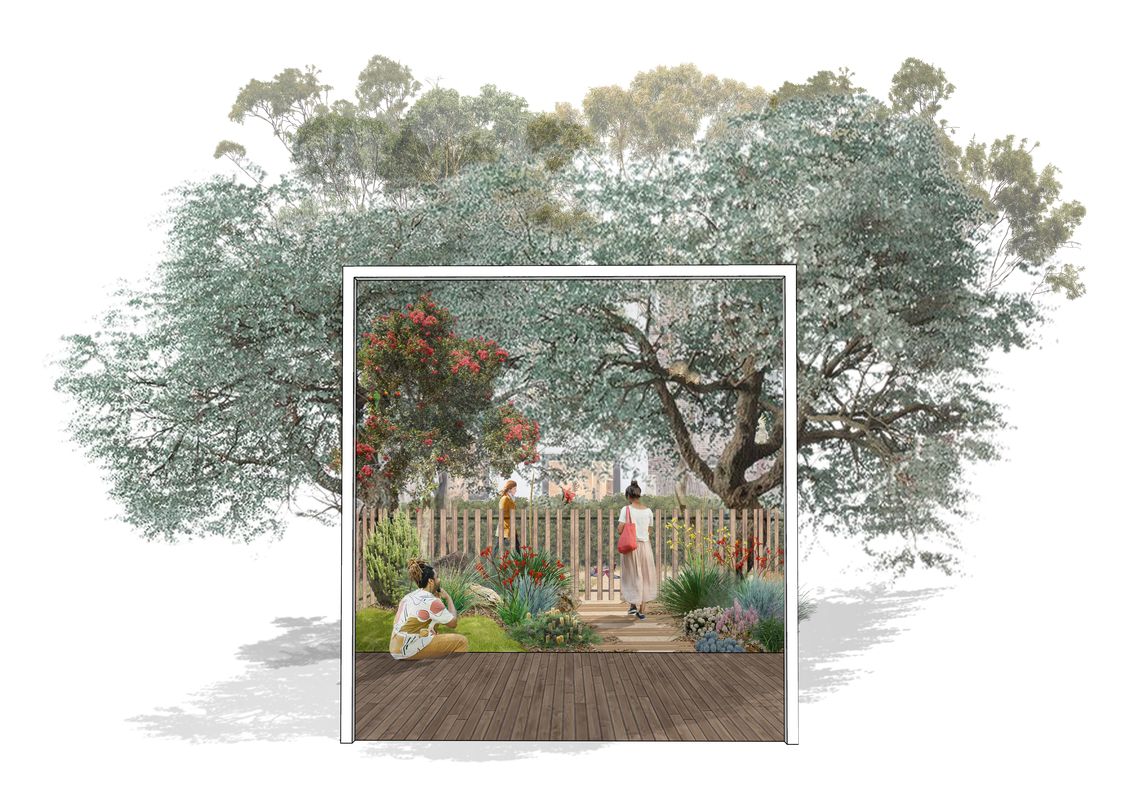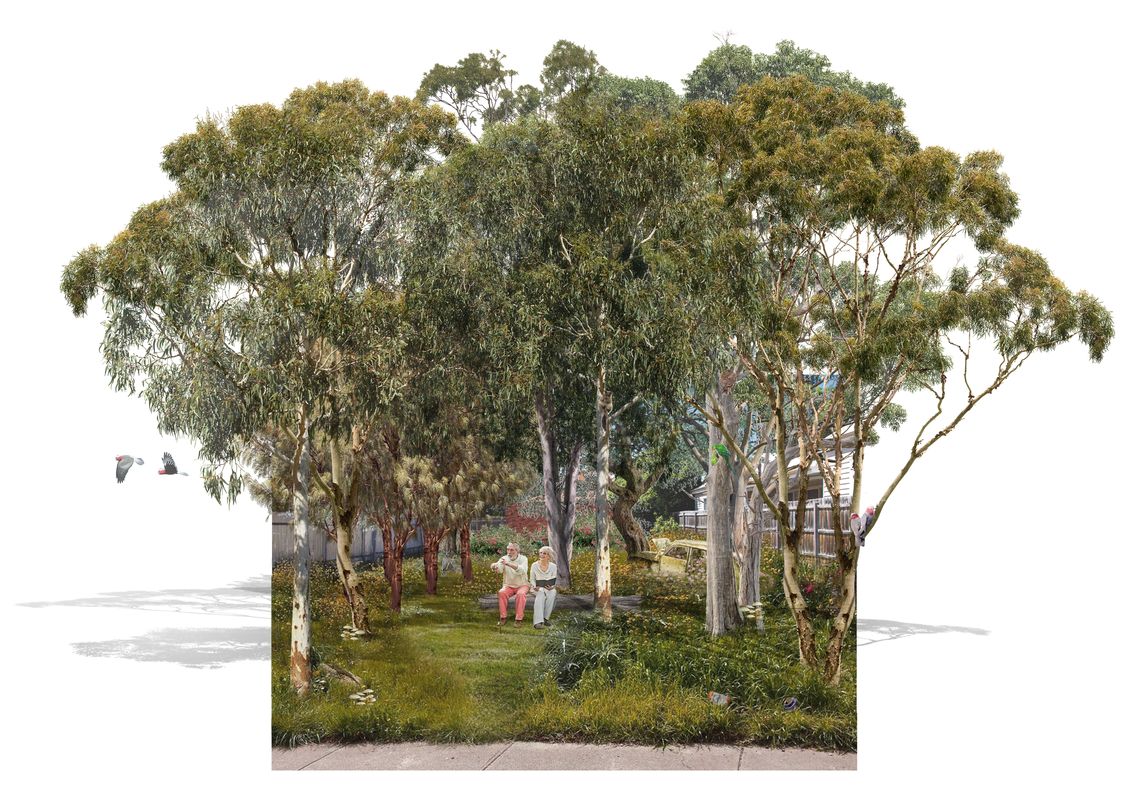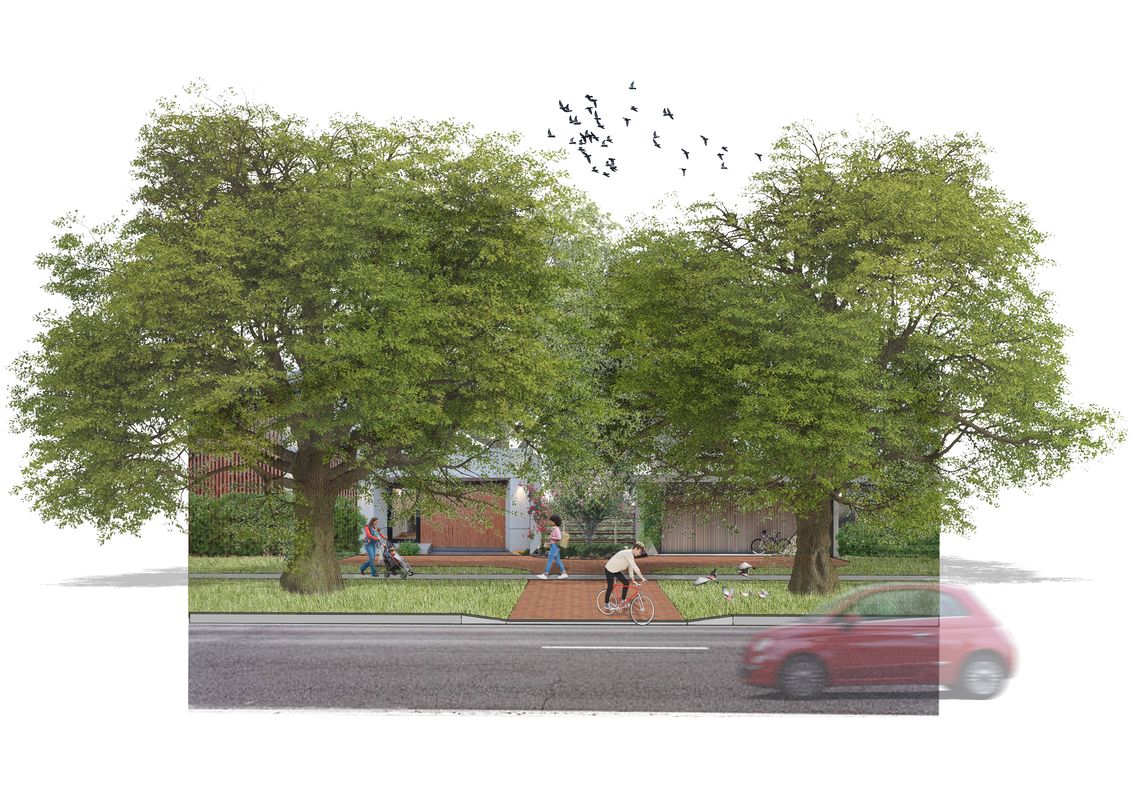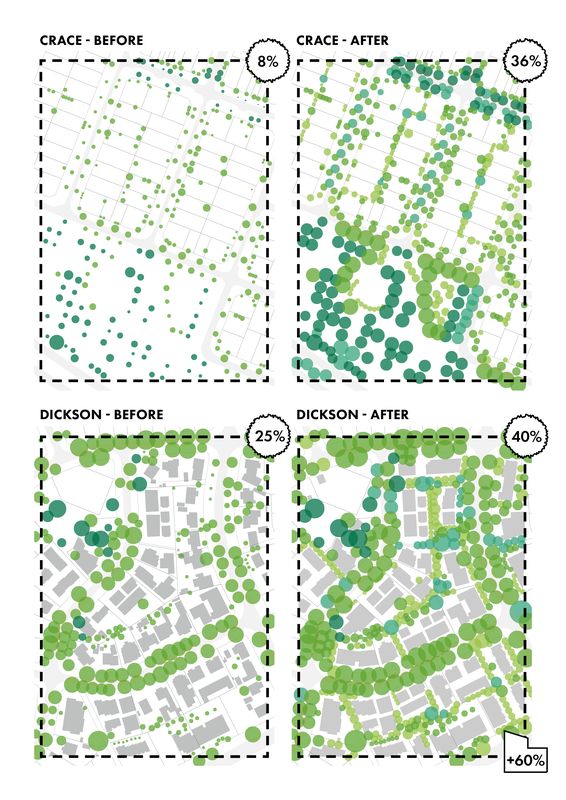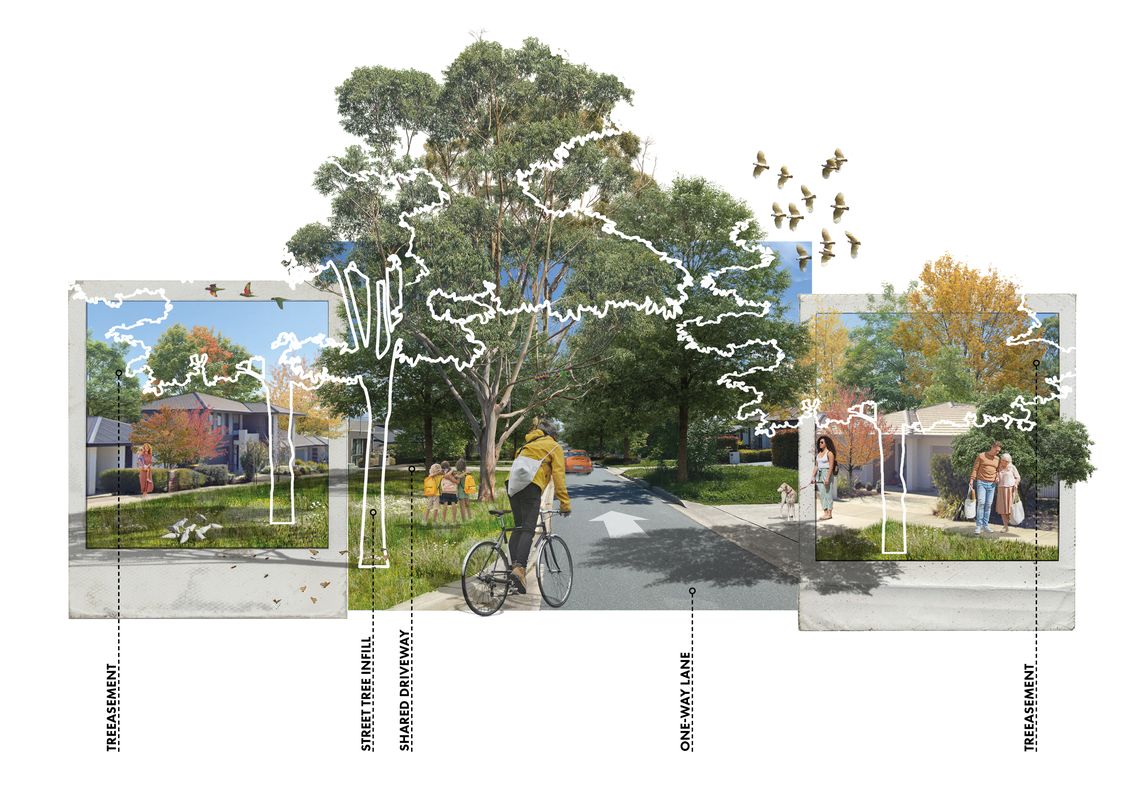Canberra is known as Australia’s “Bush Capital” – a low-rise, low-density city defined by its leafy character and easy access to nature. While originally planned as compact, Canberra has materialized as a sprawling city, slowly encroaching on the limited land within the Australian Capital Territory boundary. Projections predict that Canberra’s population could double by 2066, making the continuation of greenfield developments no longer a sustainable option in the face of the twin crises of climate change and biodiversity loss. Hence, Canberra is confronted with the opposing challenges of densifying its districts within their existing footprints while simultaneously expanding its living infrastructure in order to combat these planetary emergencies. Since the densification of suburbia is traditionally associated with higher site coverage giving less space for landscape and large trees, these strategies of “future-proofing” initially seem incompatible with the capital’s unique bush character.
This graphical research study investigates how Canberra might increase its canopy cover from 21 percent to at least 30 percent, further strengthening its Bush Capital identity while densifying to accommodate future population growth. The project examines urban planning and tree protection policies applicable to the Australian Capital Territory, analyzes and compares it with a newer fringe development that lacks substantial canopy cover and a green inner-city suburb transforming due to urban infill, and then translates these findings into spatial typologies which could support the achievement of both objectives. The driving principles for the development of these spatial typologies were: to free up or create additional space for trees, to generate more favourable conditions and microclimates supporting tree development and to increase the ecological value of living infrastructure by enhancing connectivity. After the application of these typologies to the study locations and following a critical design evaluation of the results, the study concludes by closing the loop and turning the reflections into suggestions for planning codes and design guidelines relevant to Canberra’s planning system.

